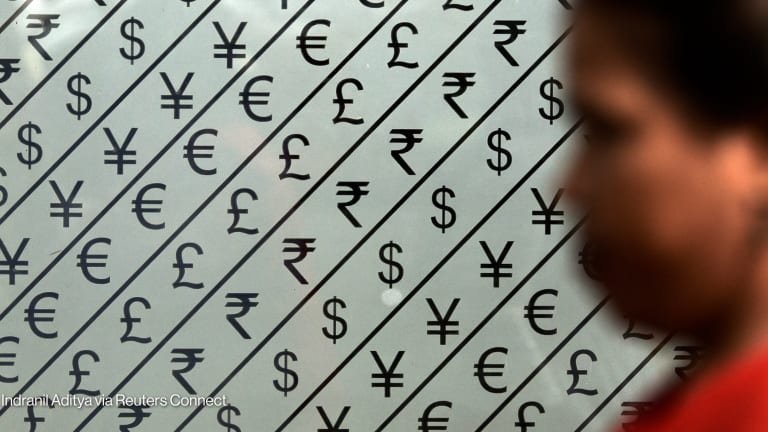MDBs boost climate finance, but not for the most vulnerable
Where did multilateral development banks allocate their climate finance commitments in 2014? Devex takes a closer look at a joint report from six MDBs to find out where the money went — and what these funding flows mean for some of the world’s most vulnerable countries.
Climate deadlines are fast approaching but the world is still a long way from raising the $100 billion a year needed to help developing countries cope with the effects of climate change. Multilateral development banks play an important role in deploying scarce resources and leveraging more investments for climate action, but how much of these funds are going to the most vulnerable countries and regions? The latest annual joint report on climate finance, released by six MDBs, revealed that the banks committed a combined $28.3 billion toward climate change mitigation and adaptation initiatives in 2014, up 19 percent from the $23.8 billion they obligated the year before. The amount set aside for climate action constituted 22 percent of total MDB funds mobilized by the African Development Bank, Asian Development Bank, European Bank for Reconstruction and Development, European Investment Bank, Inter-American Development Bank and World Bank Group. Of the total amount, 91 percent came from the MDBs’ own resources while the rest was sourced from a mix of bilateral and multilateral instruments, including the Global Environment Facility and Climate Investment Funds. Among the MDBs, IDB made the biggest jump in committed climate finance compared with the year before — having more than doubled its funds from $1.2 billion to $2.5 billion. AfDB also set aside 59 percent more for climate finance in 2014, committing $1.9 billion. But while the World Bank Group posted a 37 percent increase in climate commitments, its private sector arm — the International Finance Corp. — showed a slight decrease of 4 percent. ADB, on the other hand, set aside 13 percent less for climate finance in 2014 than it did in 2013. Two-thirds of total climate finance from MDBs in 2014 went to public recipients and borrowers. For the first time, the banks included types of financial instruments in their joint report as well, revealing that loans made up most of their climate finance at 83 percent. IDB and the World Bank also provided development resources in the form of policy-based instruments, which are “fast-disbursing financial instruments provided to the national budget in the form of loans or grants together with associated policy dialogue and economic and sector work in support of policy and institutional reforms.” Tilted toward mitigation Since the MDBs began tracking mitigation and adaptation funds against their total climate finance in 2012, scales have been tipped toward mitigation, with the gap growing even wider every year. In 2012, climate finance was at a ratio of 78 percent mitigation to 22 percent adaptation, while in 2013 it was 80 percent mitigation to 20 percent adaptation. 2014 saw an even bigger difference with 82 percent — $23.3 billion — of MDBs’ climate funds going to initiatives and projects with mitigation benefits, and only 18 percent — $5.1 billion — for those with dedicated adaptation benefits. Among mitigation activities, most funds went into energy efficiency, renewable energy and transportation projects designed to reduce and prevent greenhouse gas emissions. On the other hand, most funds earmarked for adaptation went into energy, transport and other built environment and infrastructure projects aimed at helping vulnerable countries limit and cope with the negative impact of climate change. Rachel Kyte, vice president and special envoy for climate change at the World Bank, explained that mitigation needs, specifically in middle-income countries where emissions are growing fast, are indeed huge themselves and require massive funding. “There is space for very large projects focused on energy efficiency and urban transport,” Kyte told Devex. “If you think about the needs of the middle-income countries, then that would seem to be entirely consistent. It is not surprising to see large amounts of climate finance flowing into large projects in middle-income countries, given the state of development in middle-income countries and the need for efficiency and the need to grow clean.” She did however also talk about a huge gap in adaptation needs in both the least-developed and middle-income countries. “We are way, way, way off where we need to be,” Kyte said. “And the need for resilience is immediate, because if we can build resilience now, we save lives and save the need to spend more money on relief and we build a pathway to more sustainable development. So the urgency to increase adaptation spending is absolute.” Dwindling funding for adaptation initiatives is especially alarming in light of the U.N. Environment Program’s 2014 Adaptation Gap Report, which finds that real adaptation costs, already with emissions reductions in place, are two to three times higher — possibly even more — than the initial price tag of $70 billion to $100 billion per year. Although the future of adaptation finance is still quite murky, there have been some efforts to close the gap between mitigation and adaptation. The Green Climate Fund, for instance, has set a 50:50 balance for funding of both types of climate activities. But the question remains as to whether the GCF will even be able to hit its funding target, with 33 countries having pledged a combined total of only $10.2 billion out of the necessary $100 billion as of May 2015. Mapping the money A look at the MDBs’ total climate finance by region shows that funding favorites have been changing every year since the report began tracking the information in 2012. During the first year, Latin America and the Caribbean got the largest piece of the pie at 18 percent, followed by East Asia and the Pacific, and non-EU Europe and Central Asia, respectively. In 2013, non-EU countries in Europe and Central Asia led with 22 percent of MDB climate finance, with East Asia and the Pacific coming in second at 18 percent. In 2014, however, East Asia and the Pacific received only 10 percent of MDBs’ total climate finance, putting it at second to last place — getting more than only the Middle East and North Africa’s 9 percent. The largest chunk — or 21 percent — of 2014 MDB climate funds went to South Asia. This was followed by Latin America and the Caribbean with 17 percent, non-EU countries in Europe and Central Asia with 16 percent, sub-Saharan Africa with 15 percent, and the 13 newest EU member states from the 28-state bloc with 12 percent. Of the $28 billion for climate finance from MDBs, only $4 billion went to least-developed countries and small island states, which are among those most vulnerable to the impact of climate change. According to the World Risk Report 2013, countries which both have high exposure to natural hazards and lack the social and financial structures to cope with them lie predominantly in Oceania, Southeast Asia, Central America and the southern Sahel — not exactly where the money has been going. Funding per region might seem affected by the skew toward mitigation, with middle-income countries in South Asia like India and Pakistan getting more to help curb emissions. However, a breakdown of the adaptation-focused funds shows that out of $5.1 billion, only $1.5 billion went to helping the least-developed countries and small island states adjust to the overwhelming impact of climate change. A holistic approach to resilience Kyte explained that the need for resilience within economies and societies is deep-seated, and can only be answered with a more holistic approach to climate change mitigation and adaptation. In addition to adaptive efforts such as reconfiguring coastal development and city building codes, countries need universal access to financial services, stronger social structures and better governments. “Countries which are governed better, countries which have clearer rules and stronger investment climates and better prepared development projects will do better because it is easier for finance to flow,” Kyte explained. “And then of course we have to understand what the additional costs are for building that resilience in infrastructure, in agriculture and maintaining their growth and competitiveness.” But with the Paris climate conference drawing closer, pressure to fill the funding gaps in adaptation are mounting, and rightly so. “Between now and 2020, we have to massively increase the amount of money flowing into adaptation and the building of resilience through MDBs and through every other channel,” Kyte said. Check out more funding trends analyses online, and sign up as an Executive Member to receive the information you need for your organization to thrive.
Climate deadlines are fast approaching but the world is still a long way from raising the $100 billion a year needed to help developing countries cope with the effects of climate change. Multilateral development banks play an important role in deploying scarce resources and leveraging more investments for climate action, but how much of these funds are going to the most vulnerable countries and regions?
The latest annual joint report on climate finance, released by six MDBs, revealed that the banks committed a combined $28.3 billion toward climate change mitigation and adaptation initiatives in 2014, up 19 percent from the $23.8 billion they obligated the year before. The amount set aside for climate action constituted 22 percent of total MDB funds mobilized by the African Development Bank, Asian Development Bank, European Bank for Reconstruction and Development, European Investment Bank, Inter-American Development Bank and World Bank Group. Of the total amount, 91 percent came from the MDBs’ own resources while the rest was sourced from a mix of bilateral and multilateral instruments, including the Global Environment Facility and Climate Investment Funds.
Among the MDBs, IDB made the biggest jump in committed climate finance compared with the year before — having more than doubled its funds from $1.2 billion to $2.5 billion. AfDB also set aside 59 percent more for climate finance in 2014, committing $1.9 billion. But while the World Bank Group posted a 37 percent increase in climate commitments, its private sector arm — the International Finance Corp. — showed a slight decrease of 4 percent. ADB, on the other hand, set aside 13 percent less for climate finance in 2014 than it did in 2013.
This story is forDevex Promembers
Unlock this story now with a 15-day free trial of Devex Pro.
With a Devex Pro subscription you'll get access to deeper analysis and exclusive insights from our reporters and analysts.
Start my free trialRequest a group subscription Printing articles to share with others is a breach of our terms and conditions and copyright policy. Please use the sharing options on the left side of the article. Devex Pro members may share up to 10 articles per month using the Pro share tool ( ).
Liana is a former Manila-based reporter at Devex focusing on education, development finance, and public-private partnerships.








